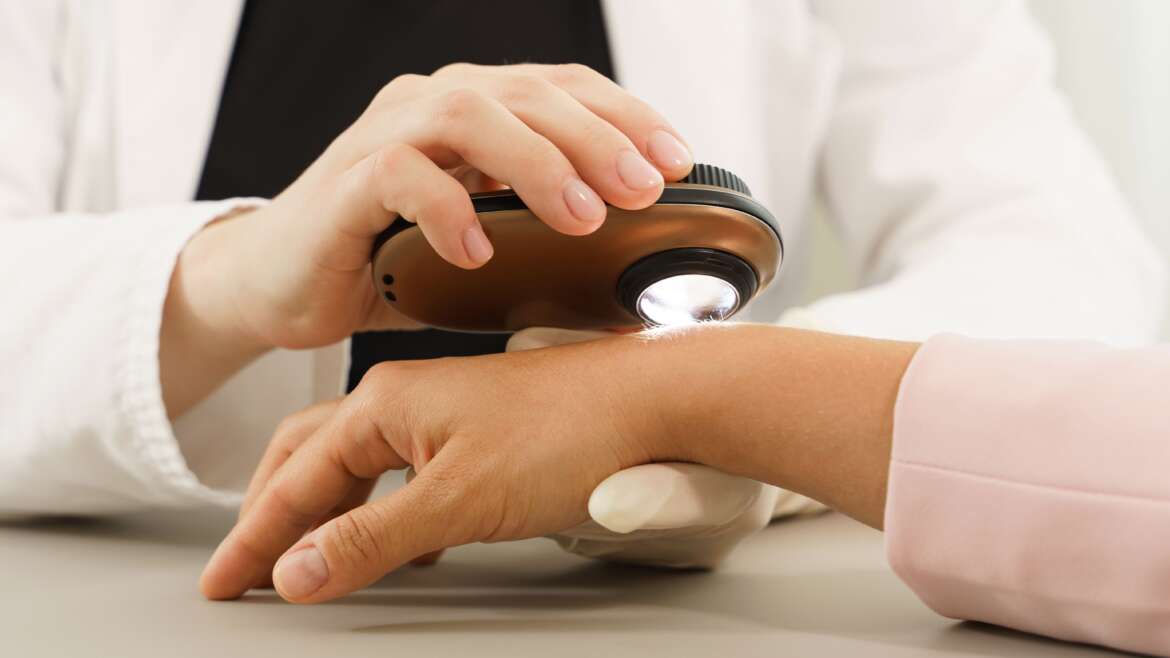Found a questionable mole on your arm? Have a hard lesion on your leg that refuses to heal? Then it’s time to find a dermatologist near you for a skin evaluation. Here are five steps for finding a skin cancer doctor in McLean, Virginia, as well as what you should do once you find one.
1. Check Out Skin Cancer Doctors Within Your Insurance Network
The easiest way to find a reputable skin cancer doctor near you is to check within your insurance network. Most insurance companies have a website where you can locate providers that accept and work with your specific insurance plan.
If you are without insurance, there are many resources and websites available to help you find skin cancer specialists in your area that offer care and assistance for patients paying out of pocket. Discuss financing and other options ahead of time for a less stressful care experience.
2. Do a Self Assessment
Whether you’ve spotted a suspicious spot at random or have some concerns, take the time to do a routine self-exam. Learning the common signs and symptoms of skin cancer is crucial for staying on top of your skin’s health. Additionally, it will allow you to stop potential skin cancers before they spread.
For melanoma, follow the ABCDEs of detection and the “Ugly Duckling” sign. The “Ugly Duckling” sign is simply a mole that doesn’t look like the others on your body. The ABCDEs of melanoma are as follows:
- A for Asymmetry: A mole or birthmark is asymmetrical in nature, with one half of the mole or birthmark not matching the other.
- B for Border: The border, or edges, are irregular, blurred, notched, or ragged.
- C for Color: The color is irregular and not the same all over. These moles or birthmarks may include shades of black, brown, or even patches of red, white, blue, or pink.
- D for Diameter: The spot in question is larger than 6 millimeters or about ¼ inch. For reference, that’s the size of a pencil eraser.
- E for Evolving: The mole or birthmark is evolving, changing in color, size, and/or shape.
For other types of skin cancer, such as basal cell or squamous cell carcinomas, look for these signs:
- Areas that are a light yellow or appear as scars
- Firm pink or red nodules or growths that can be dome or horn-shaped
- Growths, moles, or spots that change or grow rapidly
- Lesions that are hard, flat, rough, or scaly that are pink/red / brown or itch, bleed, and/or crust
- Pearly, waxy, or translucent bumps that are small and smooth
- Spots that bleed, ooze, or crust randomly and do not seem to heal or that return after healing
Examine all areas of the body, including between your toes and fingers, your scalp, your genitals, and other areas you might otherwise neglect when doing a self-assessment.
3. Look at Your Doctor’s Credentials
Take a look at your doctor’s practice, including credentials, licenses, reviews, and more. All licenses and certifications should be legitimate and up to date.
What types of skin cancer do they specialize in? What treatments are they trained in and certified to perform? Do you agree with their approach to medicine, and does it fit your needs? Also, pay attention to previous patients’ experiences and the success rate of their treatments as well.
4. Notice a Suspicious Spot? Schedule an Appointment
The next step is scheduling an appointment with your chosen doctor. Not only will you be able to interview and consult with them, deciding if they’re the right dermatologist for you or otherwise, but you’ll also receive a professional skin assessment and get the answers you’re looking for.
Your doctor should use both their eyes and hands as well as earnestly listen to your concerns for a thorough skin cancer screening. This should be followed by an open discussion between the two of you about biopsies, potential treatments, preventative measures, and more.
If you find that your dermatologist isn’t thorough, ignores your concerns or questions, or you just don’t feel they’re the right fit for you, then that’s totally fine and you can find another provider. Throughout this entire process, trust your gut and do what’s right for you.
5. Talk to Your Doctor About Treatments
If your doctor finds a potentially cancerous mole or lesion during your skin cancer screening, it will be biopsied and sent to a lab for further research and analysis. Then, if the growth is found to be cancerous, it’s time to discuss treatment.
Treatment may involve Mohs surgery. This is the most effective treatment for basal cell and squamous cell carcinomas. You and your doctor will work with each other to find the appropriate treatment for your specific type of skin cancer.
This should include an open, honest discussion about what you should expect from biopsy to post-treatment and the success rate of each treatment presented to you. Additionally, a good dermatologist understands that not all skin cancers are created equal and therefore treatment is unique.
Meet With the #1 Skin Cancer Doctor in McLean, Virginia Today, Dr. Marjan Yousefi!
It is incredibly stressful to face a potential skin cancer diagnosis. Fortunately, Dr. Yousefi and her team are here to make it easier with personalized care that puts you first. Contact us at 703-255-5070 to book your own skin cancer screening with the top skin cancer doctor in McLean, Virginia today!

